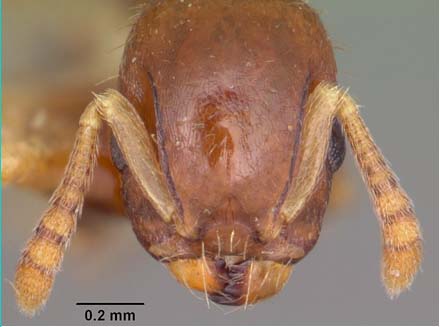Phenomenon of Slave-Making Behavior in Ants
Biology 342 Fall 2014
Emma Schweitzer & Rob Haas
| Home | Phylogeny | Ontogeny | Mechanism | Survival Value | References | Courses Home |
Mechanism
Mechanism is the particular method ants may employ to enslave their neighbors, be it coupling dulotic and inquiline behaviors together or creating their own new behaviors.
About Behavior Behind Slavery
Ant slavery is a complex and multifaceted behavior that coalesces once many other behaviors have been coupled together. Ant colonies often fight each other, and many have their own territories. A few ant families demonstrate particular behaviors of polygyny and polydomy, and are thought to be closely related to dulosis.
A.) Polygyny- when an ant colony has more than one reproducing queen, helping create a large population base.
B.) Polydomy- when one ant colony has more than one “hill”, the different holes are used for different functions (food, brood, etc.), broods are often transported between hills.
Focusing on P. Americanus ants, dulotic tactics and strategies will be considered in this website, but we encourage you to look at other information concerning polygynous and polydomous behaviors. Dulotic ants are different from their polygynous and polydomous counterparts because they make use of more scouting and slave raiding behaviors. Before any new ants are enslaved, the process begins with scout ants from the parasitic colony evaluating their raiding options, and reporting back to their colony. How they make their decision is rather unclear, but it is argued that the more aggressive ant colonies within the slave-making ants vicinity is targeted. Once the rest of the posse is organized, the parasitic worker ants will go out on a “raid”, which varies depending on the species, but results in harmful attacks and deaths in all strategies observed to date.
Dulotic ant societies often utilize interspecific cocoon caring. Enslaved ants care for slave-driver larvae, or Slave-driver ants can care for slave larvae. Or some ants kill all the eggs they find. All of the colony recognizing odors are different from colony to colony, even among conspecifics. There are multiple hypotheses about how complex behaviors in themselves, like brood transport or polydomy are coupled together into dulosis in other ant societies.
Chemical Compounds Behind Slavery
Ants are able to recognize their colony mates from alien ants (even of the same species) by their specific colony odor. Newly hatched eggs are born without this colony odor, and there is a critical period for olfactory learning, though more research on pupae from slave-making and slave-made broods is needed to detail how this early development occurs. However, it is believed that young ants define their idea of “us vs. them” early on, and can chemically produce their colony’s odor after being exposed to it for a while.

Figure 1. The backbone chemical structure for colony odors. Odors vary between different ant colonies depending on geographic region and species, so every ant colony will likely something similar to this foundational odor chemical structure with added complexity to create the specific smell associated with a particular colony.
One particularly advantageous mechanism is found in obligate parasitic ants (ants that must exploit a suitable host to carry out their full life-cycle). These ants are able to easily raid other ant colonies by being odorless, that is they do not produce a specific olfactory chemical, or they produce relatively undetectable levels of their colony odor. More research is needed to quantify if the former or the latter is actually the case. This chemical insignificance makes these ants seem invisible when they move in since there is no alert signal to be picked up on by the colony ants they are invading, facilitating nest usurpation.
Physical Mechanisms in Slave-Making Ants
A physiological adaptive value of the P. americanus is seen in their antennae and head shape. After scouting and targeting a new colony as a potential new host colony, they P. americanus ants must engage in aggressive raiding behavior against worker and warrior ants of the defending colony. This physical groove feature allows the P. americanus raiders to tuck their sensitive antennae into a more protected area away from harm that might occur during fighting and slinging of other ants in the nest being raided, making them better equipped for attacks from multiple host ants.

Figure 1. Head physiology, the deep grooves in the head of the T. americanus ant, another slave-making species sharing a physical head feature of the P. americanus, can be seen here. Both have been observed to tuck their antennae into these grooves during scouts and raids using them as a defensive mechanism to protect themselves from harm.